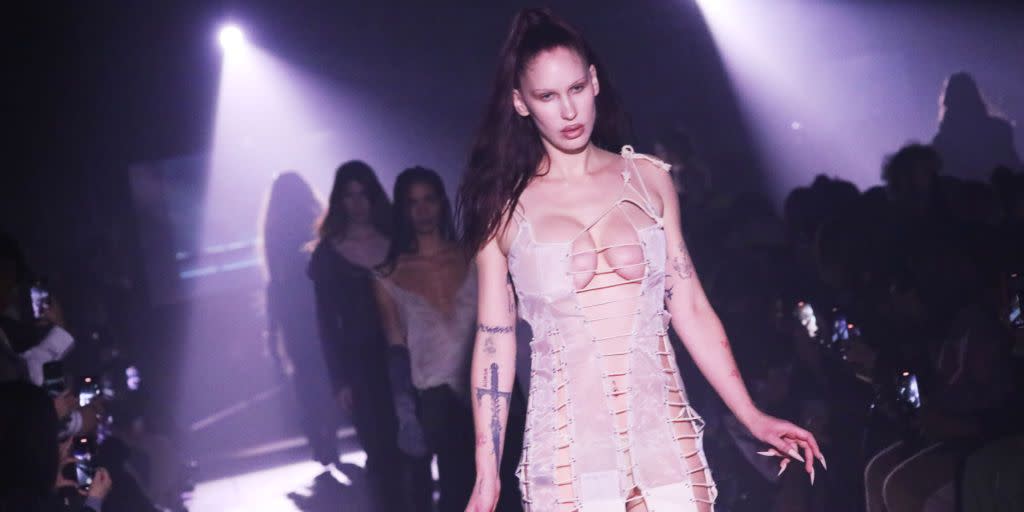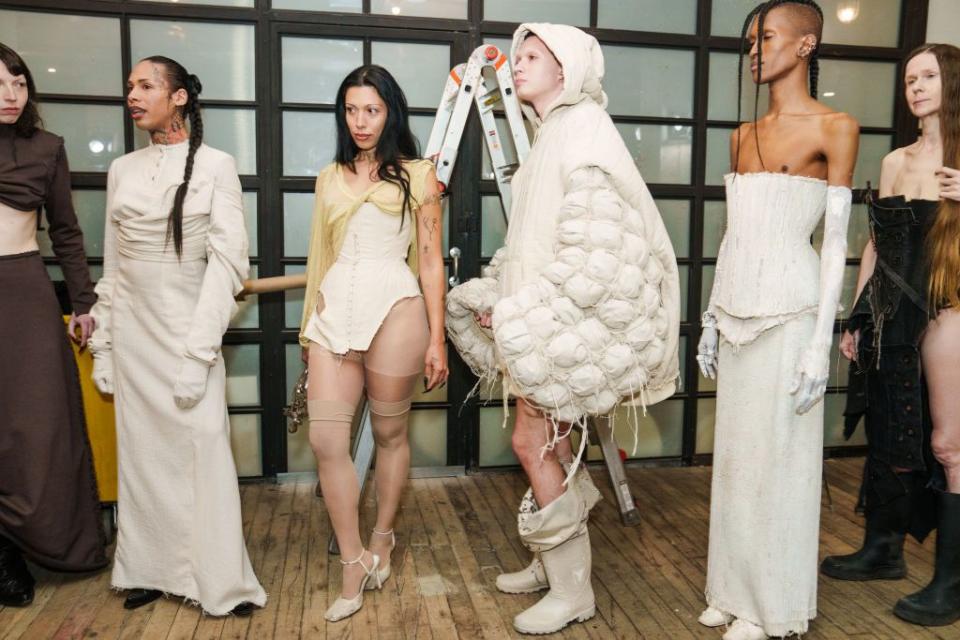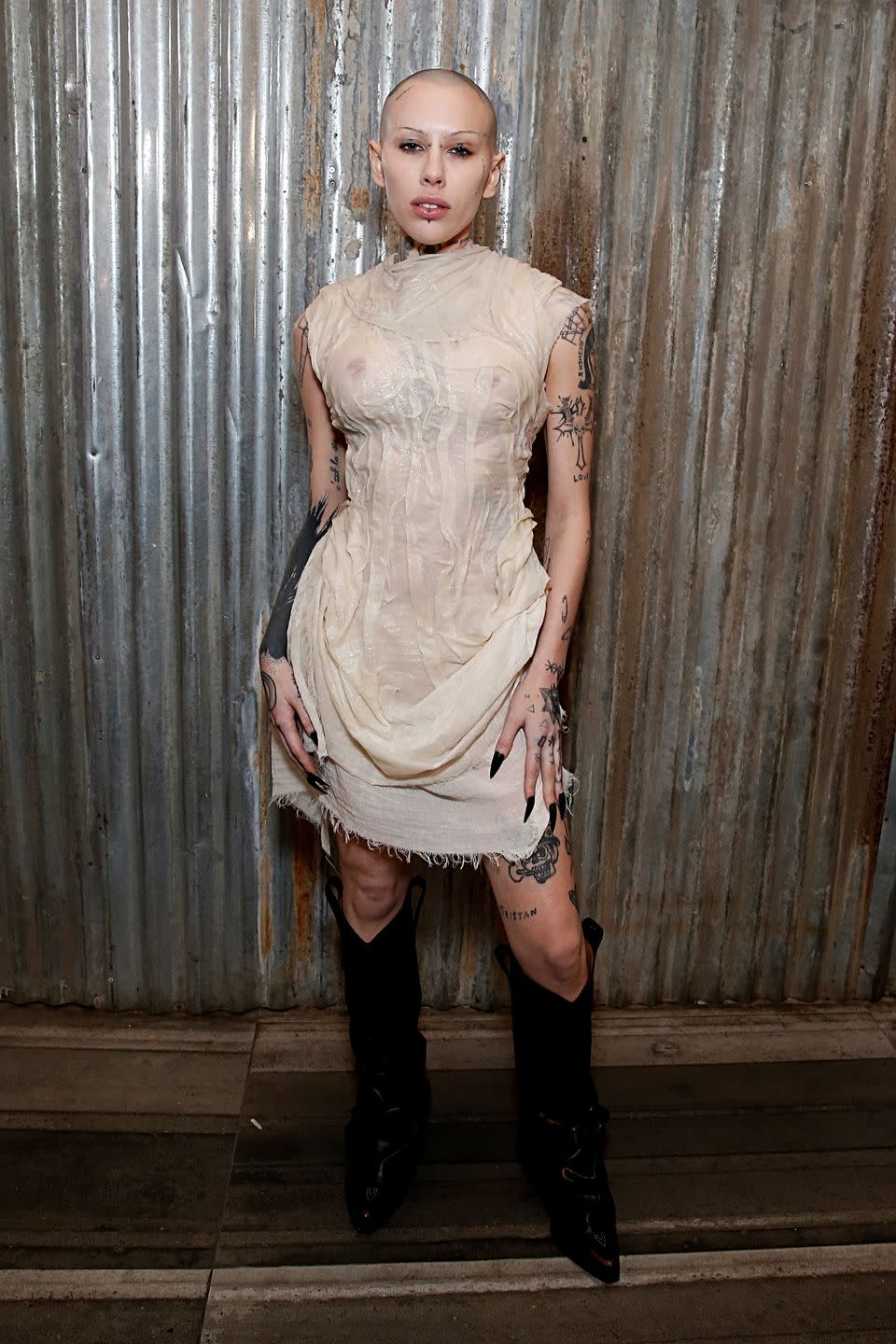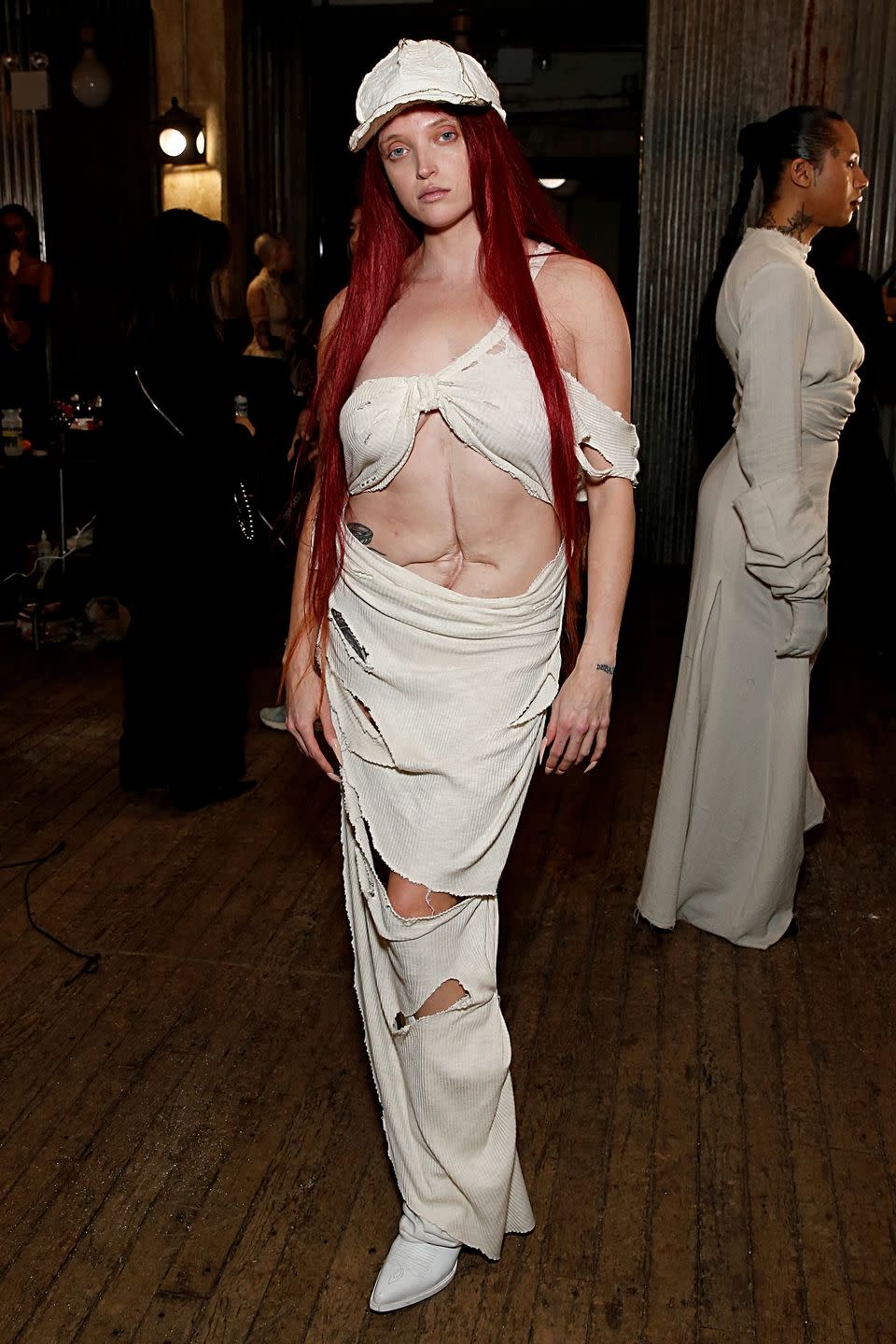A Provocative Young Designer Tweaks the Cliches of the Midwest

Perhaps no cultural medium is as “coastal elitist” as fashion. Americans tend to think of anywhere outside of New York and Los Angeles as a style ghostland, whether or not that’s true. (Personally, I think the most stylish cities in America are Dallas and Atlanta.) The old stereotypes about people in the midwest wearing sweatpants and Ugg boots still hold, even as sweatpants and Ugg boots are the current uniform in any trendy restaurant in New York or Paris.
So it's too easy to forget that fashion does not necessarily have to come from a place that is known for its style. In fact, fashion at its best often comes from locations that seem to have little relationship to the medium; there’s a reason workwear and uniforms remain such rich fodder for designers.
In other words, it’s shocking that it took us until now to see the likes of a designer like Elena Velez.

Velez’s Monday night show in a Greenpoint warehouse was like snapping out of the fashion status quo and into something more personal, a red-eyed glare at fashion’s coast elitism. Velez, the daughter of a shipbuilder, is based part time in her native Wisconsin. She cast models whose bodies more accurately reflected the average person than the slim runway standard, but it was all hyper-stylized; several of the models appeared to have plastic surgery or other cosmetic treatments (one of them had large scars across her abdomen), and they walked in a fury, seeming to be in a daze or a strung-out trance. One charged forward carrying the trophy Velez won as CFDA’s emerging designer of the year last November, suggesting, as Velez joked backstage, that she might have just bludgeoned her husband.

The clothes themselves spoke of the industrial decay of Velez’s native midwestern landscapes. “Every collection is inspired by the tropes and caricatures of bygone Americana,” Velez said, but they also seem to contain the sadness of what has happened since that (perhaps imagined) golden age. Velez worked with a metalsmith in Wisconsin to make bustiers that were raw and machine-like but never sleek. Another one of her dresses looked slathered in clear glue. An enormous cardigan with bulbous sleeves was her ode to “kitschy and familiar” quilts of her midwest upbringing. She mixes the unorthodox with aggressively plain materials like canvas; dresses may have had wide, Singer Sargent-esque portrait necks, but they were made out of ribbed cotton.

“We work a lot with wasteland heroines,” she said, “and women who are building a legacy in a place of impermanence, almost. So looking a lot at prairie wives and lot lizards and trucker culture and all of these things that are deemed unglamorous by cosmopolitan standards, and then trying to refract them into a way that feels new and fresh. Kind of like the new heroin chic from the Midwest.”
Velez speaks a lot about kitsch, Americana, and other terms that seem Warhol holly-jolly, but her clothes are dark and even political, though more as a hovering menace than some kind of message of protest. Much as we might try to think otherwise, fashion shows do not lend themselves easily to current events, though of course a good designer is always immersed in other fields of culture, either as a creator, thinker, or mere imbiber.
Velez called her clothes “heroin chic for now,” and before she even made that statement, I found myself thinking during the show of the opioid crisis that has ravaged much of the country. This is just Velez’s fourth season, though the scale of the venue and size of the crowd showed her ambitions are growing. And she seems interested in making her clothes stranger, rather than more accessible. That means her shows and clothes might be divisive—audiences often find it hard to swallow high fashion crafted around blue collar or middle-class narratives, or even clothes about people who don’t live in cities, even if the designers come from those worlds themselves. (In Velez’s audience were the two hosts of “Red Scare,” the edgelord podcast that has become increasingly controversial for their support of Alex Jones and other right-wing figures and causes). Regardless, Velez is a major American talent to watch.
Easier to swallow was Tory Burch’s fantastic collection of backwards cocktail sheaths, slinky cocktail dresses, and satiny shirting and trousers. Burch is another designer doing super-wearable clothes, although that has, of course, always been her remit. But what’s changed in Burch’s approach over the past several seasons, making her a designer twenty- and thirty-somethings are going gaga for, is that she seems to have started making her clothes for and about herself. (Stepping away from the CEO role and focusing fully on her collections is the big shift behind the new focus.) The reality is that a lot of women, especially younger ones, want to look like a jaunty, sexy, winky WASP; if you’re curious why, then boy, do I have a Harper’s Bazaar package for you! Backstage, the designer spoke about how the pieces were designed to be mixed up and played around with, worn in all different combinations.
Burch’s mantra is confidence, and for many women who have been weaned on fast fashion and its close relatives, wearing a slouchy cashmere sweater with a well-cut pair of trousers, or a creamy peacoat with an asymmetrical fur collar and snippy little white silk skirt, or a nice camel coat with a denim skirt and boxy bag, is like a wakeup call. These pieces feel like your preppy fairy godmother telling you just how to find empowerment through good clothes.
You Might Also Like

